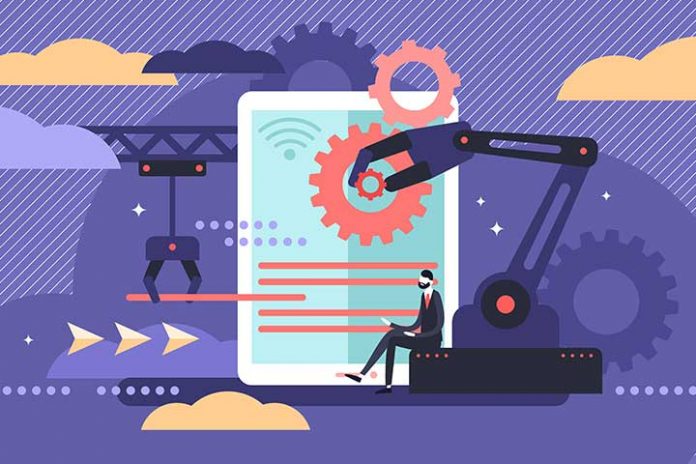Nowadays, your business has to deal with constant changes to remain competitive. Otherwise, you won’t achieve your desired business growth.
Regardless of your business experience, it’s crucial to deploy Artificial Intelligence to gather insights that significantly value your workforce. Indeed, advanced analytics tools such as workforce intelligence can positively impact the way you operate your business.
Therefore, below are the five benefits of deploying workforce intelligence for your business and employees:
1. Efficient Recruitment Process
There are many challenges that your talent acquisition faces when it comes to recruitment, such as attracting suitable candidates, hiring as fast as possible, recruiting fairly, and creating an efficient recruiting process. With workforce intelligence, hiring managers can use keywords, algorithms, and relevant data that help to reduce the cost of the recruitment process, shorten the recruiting cycle, and eliminate guessing work for the recruitment team—which will help them focus on choosing the best candidates.
It gives you comprehensive data and insights that can allow you to project future challenges, and therefore make recruiting targets and workforce changes. You can also find candidates whose profiles are similar to current employees. Additionally, during background checks, workforce intelligence carries out external, relevant data to get detailed information of the candidate, reducing the recruitment time.
2. Retain Top Talents
Employees leave companies for many reasons, including salary dissatisfaction, better job alternatives, and negative experience. On the flip side of this turnover, retaining the employees you want to keep is one of the critical issues that occur in your company. Turnover costs can have a detrimental impact on your company’s performance. Therefore, HR will need to implement and develop retention strategies, including keeping the top talents in your company focused and motivated.
And as for implementing the effective retention strategy, workforce intelligence helps your HR detect and monitor critical employees who are at risk of leaving your company. It gives you insights to be informed about better workforce decisions to retain top talents and reduce turnover. In addition, you can use it to determine compensation anomalies and come up with fair compensation based on the data gathered from external, relevant sources.
3. Build Future Leaders
There are crucial reasons for undertaking a succession plan, including replacing a senior leader, maintaining board and shareholders’ trust, identifying training needs and skill gaps, and boosting retention and morale by investing in employees. Furthermore, many HR and business owners find succession planning a complex process because they face some common challenges. These include lack of support by people of influence, weakness in performance management, and lack of time.
To ensure succession planning, you can use workforce intelligence to help you build an effective succession plan within your company. For instance, if you’re seeking a person to promote within HR manager ranks, you’ll be able to analyze based on comprehensive data on which team member is the best fit for the role. After that, you can begin grooming that person to be ready for HR’s roles and responsibilities. Additionally, with workforce intelligence, you can collect information on which team members are learning well from leadership coaching and determine their possible areas for improvement.
4. Improve Employee Performance
Performance management is one of the vital factors for your company’s success. The HR managers and team members need to work together to achieve your company’s overall objectives. However, sometimes the required performance level of the team member is not achieved because of some common performance management challenges like the wrong measurement for management. HR managers can use workforce intelligence to collect crucial team member data to evaluate team member performance adequately to solve this challenge. Workforce intelligence provides insight that allows you to see team members’ essential information, which helps you determine their shortcomings and which areas they excel in.
In addition, workforce intelligence can pick certain traits of employees, and it can alert HR managers about employees who are considering moving to different jobs. These insights help your company take the necessary preemptive and proactive actions, which helps your company focus on the right performance management objectives.
5. Catch Potential Troubles
Despite the differences in execution and strategy, most problems within almost every company are the same. Research from Chris Zook and James Allen of Bain shows that 94% of challenges in business are internal. These include job role design, process management, productivity, and turnover. As for catching these business troubles, you can use workforce intelligence to analyze how well your employees perform in the workplace. Workforce intelligence gathers relevant data on which employees are making a positive impact in the company.
Furthermore, workforce intelligence also provides insights into which employees are struggling to adapt to the company’s current state. In addition to that, you can use workforce intelligence to help you determine employees showing signs of trouble and may negatively impact the way your business operates.
Conclusion
Keep in mind that team member data can help you achieve the full potential of your workforce. Seeking to improve your company’s team member experience allows your business to remain competitive and ready to solve any future troubles.
Also Read: How Do You Motivate Your Employees In The Long Term?


